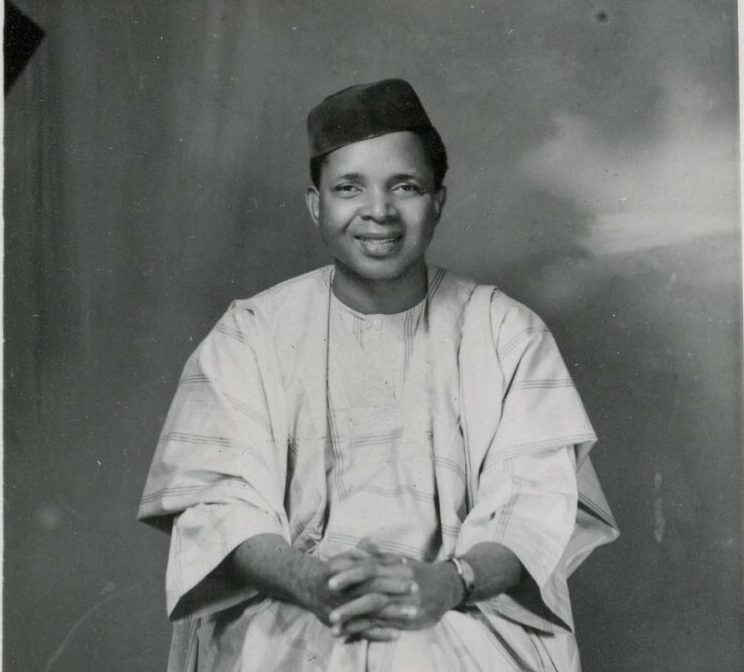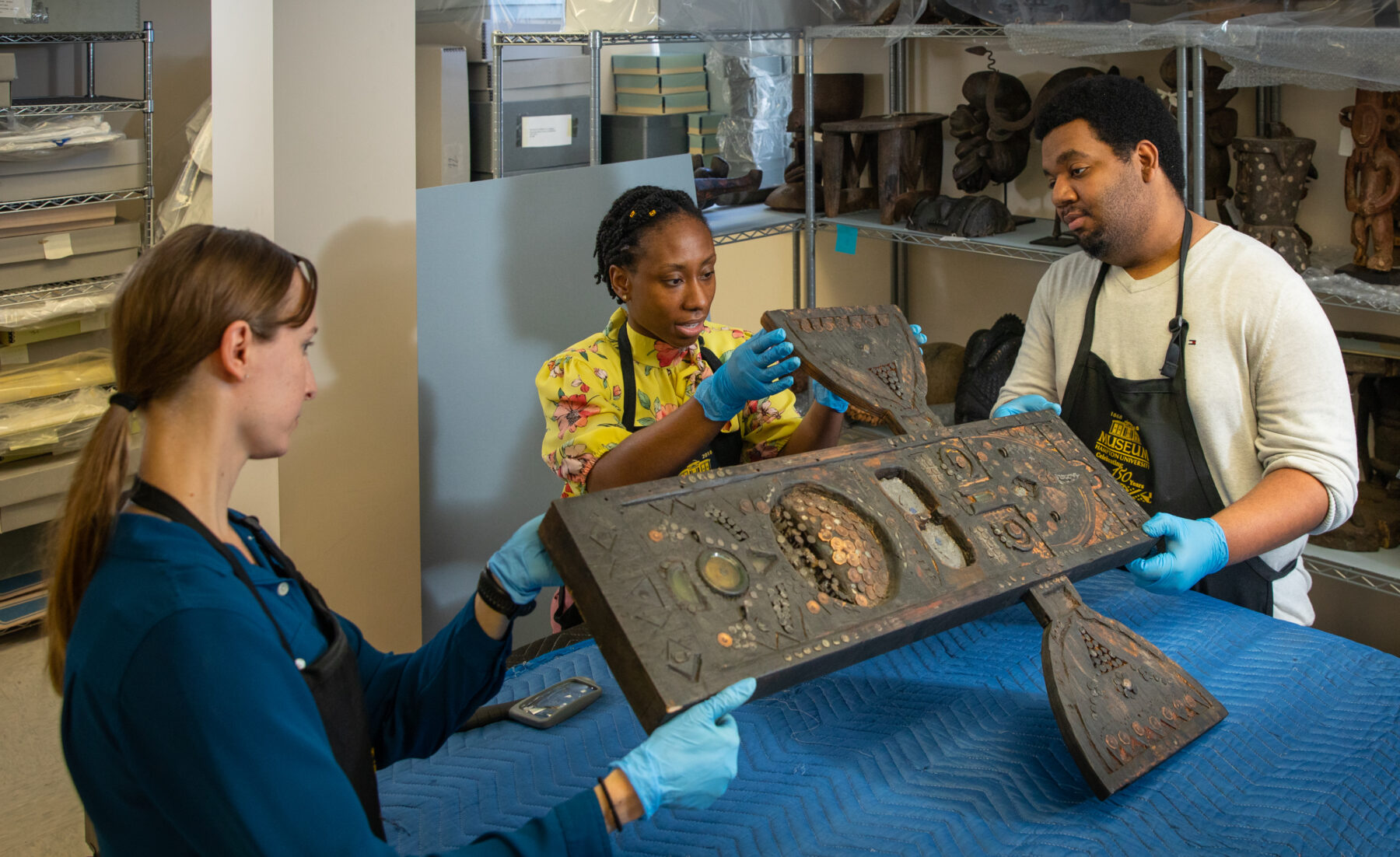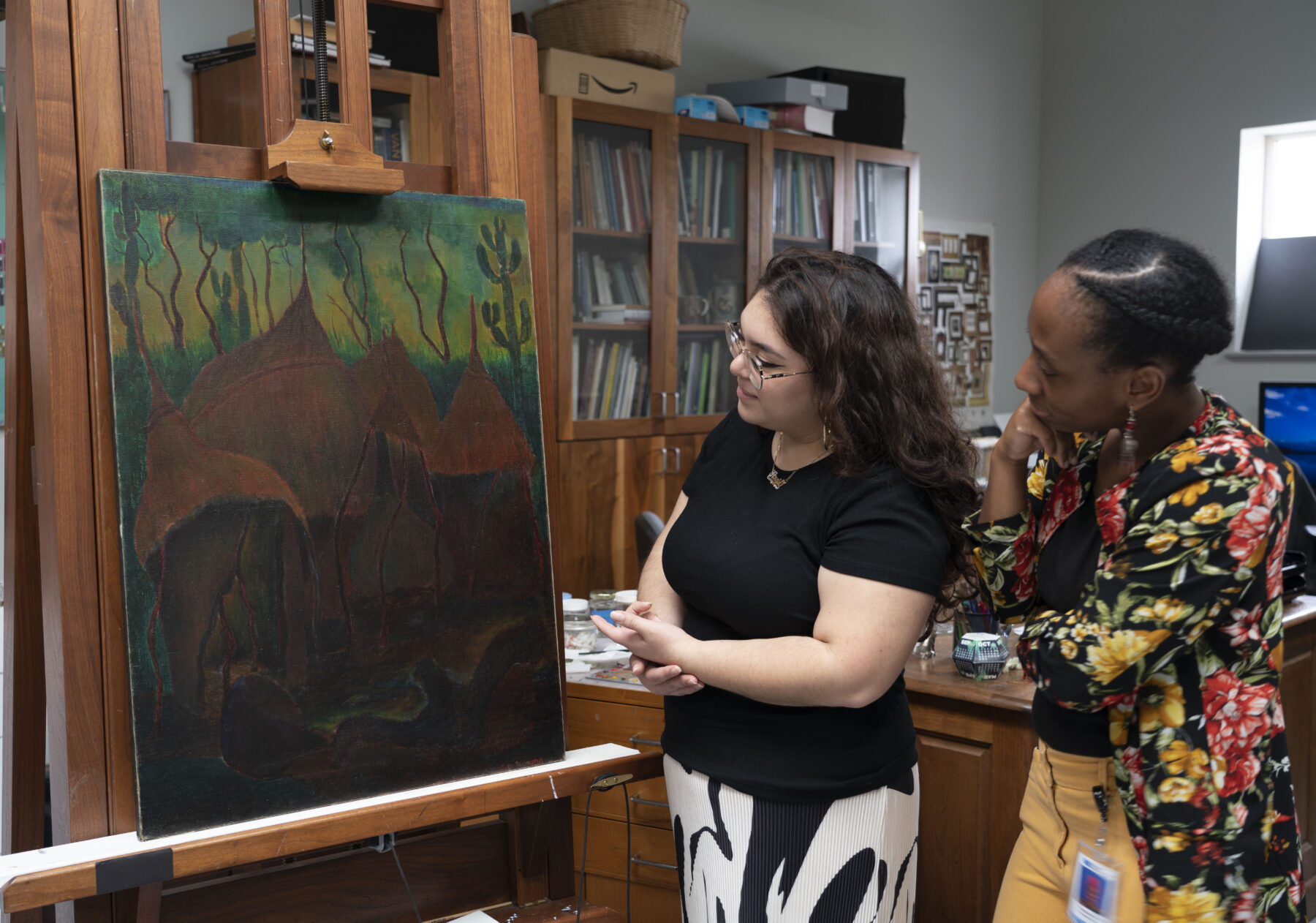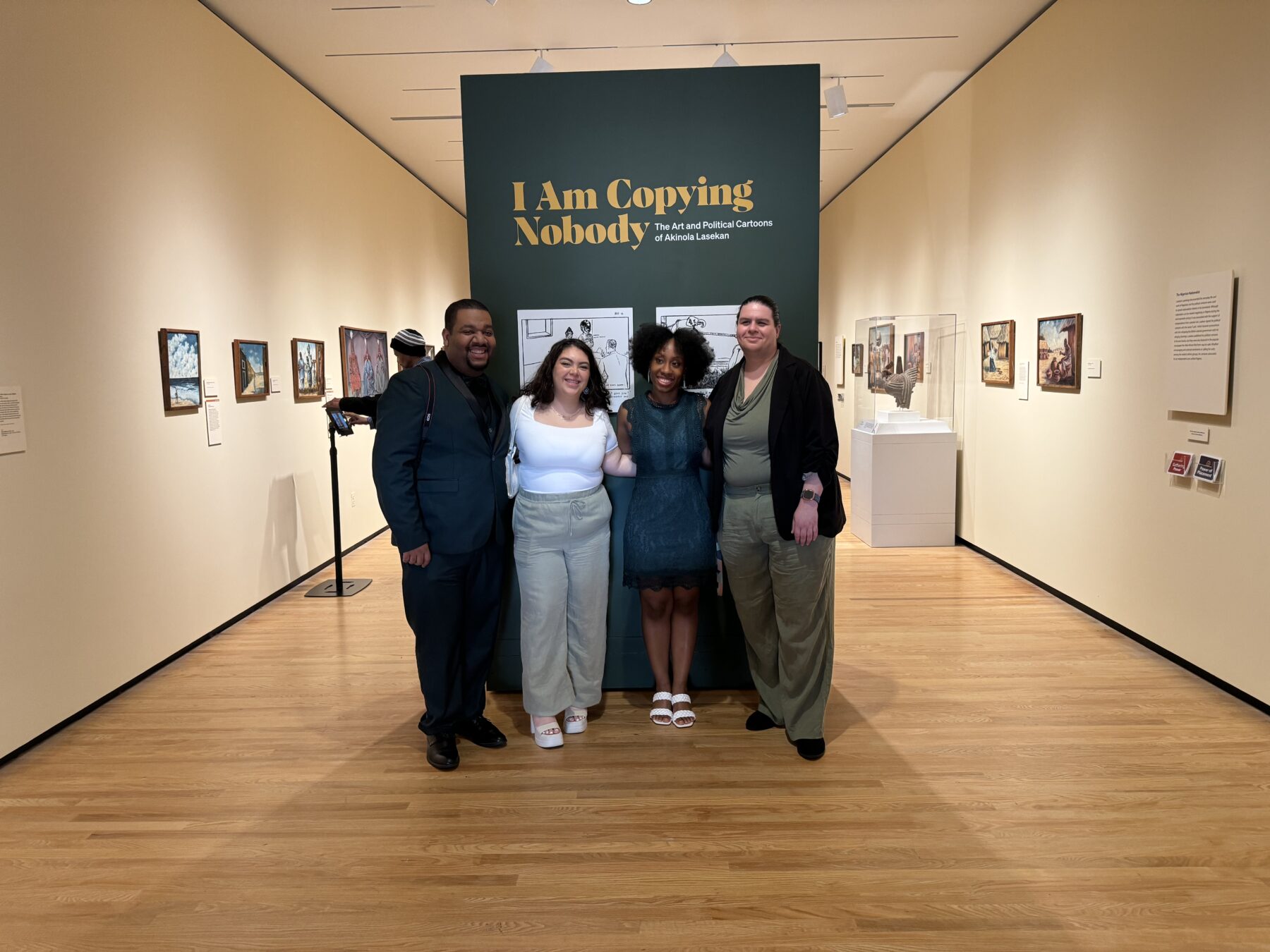A Leap of Faith: Akinola Lasekan’s Relationship with the Harmon Foundation


This is an excerpt from an upcoming catalogue for the exhibitions Sankofa: Constructing Modern African Art and I Am Copying Nobody: The Art and Political Cartoons of Akinola Lasekan. You can learn more about the upcoming exhibitionsHERE.
The August Visitors
Lasekan mailed his first letter to the Harmon Foundation in September of 1947. In this letter we discover how Lasekan learned about the Harmon Foundation and why he sent his artworks there. According to Lasekan, he was greeted by two “August visitors” who were touring Nigeria.[i] These visitors were Claude Barnett, a businessman and founder of the Associated Negro Press, and his wife, Etta Moten Barnett.[ii] The Barnetts had heard about Lasekan and invited him to present his art. Most likely sensing the potential of his work, the couple gave him the address of the Harmon Foundation and encouraged him to send his artworks to Brady, who became known for working on behalf of Black artists and institutions.[iii]
Lasekan shipped his artworks by boat to New York to spark the interest of the Foundation, specifically Brady, and to secure a scholarship to study art education in the United States.[iv]Although Lasekan pursued this avenue to progress his own art career, he also saw this as an opportunity that would benefit more than himself. At the end of his letter, Lasekan states, “Finally, you will not only be doing me a world of good but also the whole of Nigerian people, nay the entire African Race for that matter, by exercising your esteemed influence and magnanimity to create for me an opportunity in the U.S.A. to develop my talent to its fullest capacity and I can assure you that with the help of God, you will have nothing to regret for it.”[v]
Lasekan often projected himself and his art as tools that worked on behalf of others. He makes this evident in a 1947 letter to Claude Barnett, in which he states, “I am copying nobody. My job has always been the portrayal of the life of my own race in the language I know and to the best of my ability.”[vi] In a 1961 letter to Evelyn Brown, assistant director of the Harmon Foundation, Lasekan shares that he is “still experimenting and labouring as to how best to interpret my thoughts and mental pictures, as honestly as I believe would do justice to my race and art in general—for a long time to come.”[vii] From these quotes, it is clear that Lasekan recognized the potential of his art to benefit those who looked like him as well as his role as a trailblazer, setting a precedent for others to follow.
The First Forty-Six
On the same day Lasekan wrote his first letter to Brady, he also sent twelve watercolors, twelve pastels, twelve black-and-white drawings, and ten pen-and-ink drawings (forty-six artworks in total) to the Harmon Foundation.[viii] Unbeknownst to Lasekan, his shipment of art from Lagos would create a problem for the Harmon Foundation, caused by confusion about the paperwork required to verify the contents of the container.[ix] Without the proper paperwork, Lasekan’s art was held at the Customs Department in New York until December.[x] At one point, Brady considered returning the shipment to Lasekan so the Harmon Foundation could avoid paying a duty fee of sixteen dollars to release it.[xi]
Lasekan may have breathed a sigh of relief when he received Brady’s December letter, alerting him to the news that the Harmon Foundation finally got his artworks from the Customs Department. Most important, the artworks were still in good shape.[xii] The condition of his art after traveling on a boat was very important, because Lasekan had staked a great deal on the drawings. Not only were they meant to get the Harmon Foundation interested enough to sponsor his education in the United States, they were also meant to be exhibited and sold so Lasekan could build a market for his art.[xiii]
Brady also had big plans for Lasekan’s work. These plans included having commercial galleries review and gain interest in Lasekan’s art, making black-and-white Kodachrome slides so images of his art could be sent to places around the United States, and producing pictures of the Barnetts looking at his work.[xiv] Brady mentioned that they were arranging several exhibitions of Lasekan’s work “and others in various educational institutions, libraries, and galleries throughout the United States.”[xv] She also expressed interest in African basketry, pottery, ivory, and gold jewelry in order to pair these items in an exhibition of modern African art. These plans were the beginning of an intercultural exchange of art, artists, and ideas between the communities in the United States and several African countries. Mary Brady led the Harmon Foundation in becoming a leader of this intercultural exchange during the 1950s and 1960s. This exchange mainly encouraged African artists to visit and send their art to the United States, which ultimately increased the presence of modern African art there. Between 1952 and 1965, Brady, through the Harmon Foundation, coordinated the visits of twenty-five African artists, including Nigerian artist Ben Enwonwu, Ghanaian artist Vincent Kofi, and Ethiopian artist Alexander “Skunder” Boghossian.[xvi] Unfortunately, Lasekan was not a part of these visiting artists despite Brady’s plans for his art.
[i] Akinola Lasekan to Mary Brady, August or September, 1947, Harmon Records. The copy of Lasekan’s orginial letter has a date of June 7, 1947. This is most likely a mistake. The letter was mostly likely sent sometime early September or maybe sometime in August.
[ii] Gerald Horne, “Introduction,” in Rise and Fall of the Associated Negro Press: Claude Barnett’s Pan-African News and the Jim Crow Paradox (Urbana: University of Illinois Press, 2017), 32.
[iii] David Driskell, “Mary Beattie Brady and the Administration of the Harmon Foundation,” in Against the Odds: African-American Artists and the Harmon Foundation (Newark, NJ: The Newark Museum, 1989), 68.
[iv] Lasekan to Brady, August or September, 1947.
[v] Lasekan to Brady, August or September, 1947.
[vi] Akinola Lasekan to Claude Barnett, September 6, 1947, Harmon Records.
[vii] Akinola Lasekan to Evelyn Brown, May 10, 1961, Harmon Records.
[viii] Lasekan to Brady, August or September, 1947.
[ix] Akinola Lasekan to Mary Brady, September 6, 1947, Harmon Records.
[x] Mary Brady to Akinola Lasekan, December 6, 1947, Harmon Records.
[xi] Brady to Deputy Director of Customs, October 2, 1947.
[xii] Brady to Deputy Director of Customs, December 6, 1947.
[xiii] Lasekan to Brady, August or September, 1947; Lasekan to Brady, September 6, 1947.
[xiv] Brady to Lasekan, December 6, 1947.
[xv] Brady to Lasekan, December 6, 1947.
[xvi] David Driskell, “Mary Beattie Brady and the Administration of the Harmon Foundation,” in Against the Odds: African-American Artists and the Harmon Foundation (Newark, NJ: The Newark Museum, 1989), 63.
Explore other articles like this
The Andrew W. Mellon Fellowship: Now and Beyond
In this post, I will highlight some of the accomplishments of this project and address two main takeaways that can help those looking to reproduce a similar fellowship program.
Art Spotlight: The Abandoned Hut by Mordecai Buluma
In this blog post Angie and Tashae discuss the symbolism behind The Abandoned Hut by Mordecai Buluma as well as the conservation treatment used to prepare it for exhibition.
Opening of I am Copying Nobody the Art and Political Cartoons of Akinola Lasekan
On April 13, 2024, I Am Copying Nobody: The Art and Political Cartoons of Akinola Lasekan opened at the Chrysler Museum of Art. Here are some highlights from the exhibition.


